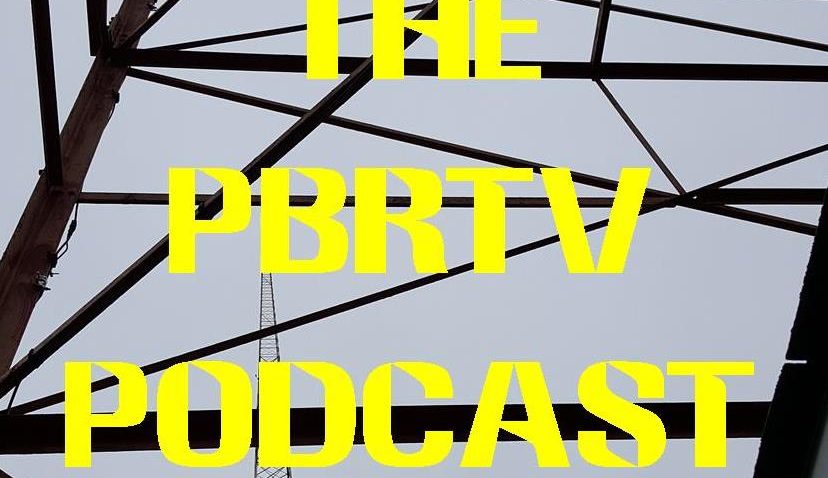Saw it then
March 16, 2009
. . .
In its 1953 annual report, Alcoa lauded Murrow as “an internationally famous reporter” and called “See It Now” one of the company’s “most effective … current promotional activities.”
“The commercial spots on this program are in keeping with its dignified basic concept, and have been of marked assistance to the Sales Department in product promotion,” the annual report said.
Alcoa began sponsoring “See It Now” in December 1951, and basked in the reflected critical acclaim when Murrow and his executive producer, Fred Friendly, brought home the voices of U.S. soldiers in programs like “Christmas in Korea.”
. . .
Although it was already the world’s largest supplier of aluminum, Alcoa had done little advertising aimed directly to the public before “See It Now.” As a result, it was little known to consumers.
According to one story, when the company was preparing to open its new plant in Davenport, Iowa, in 1948, residents had never heard of it.
One woman told a reporter “it was fine to have Alcoa come to town, but who in the world is going to drink all of it?” (Based on its name, she thought the company was some kind of a distillery.)
By 1954, as a result of advertising on “See It Now,” wrote Peter Edson of the Newspaper Enterprise Association, Alcoa was “now better known than it has been in all the company’s 65 years.”
. . .
If Murrow tackled controversies, Alcoa didn’t mind — as long as they were in far-off places like India and Trieste.
Washington, D.C., was a little too close for comfort.
As Clooney’s film correctly showed, the special “See It Now” report on McCarthy was comprised almost entirely of the senator’s own words, taken from newsreel and TV film.
Those images were not kind to McCarthy. It might have been one of the first cases when a subject’s failure to appear “telegenic” destroyed his own credibility.
. . .
 Most Americans knew of McCarthy’s activities only from reading about them in their local newspapers. Now, here was McCarthy in their living rooms — sweating, swaying, leering and slurring his words.
Most Americans knew of McCarthy’s activities only from reading about them in their local newspapers. Now, here was McCarthy in their living rooms — sweating, swaying, leering and slurring his words.
Film also demonstrated — in a way that was difficult to show in print — that McCarthy’s “investigations” were little more than a web of innuendo, lies and contradictions.
A month later, on April 6, 1954, McCarthy responded with a half-hour televised blast at Murrow and CBS in the “See It Now” time slot.
It turned out that McCarthy didn’t look or sound any better when he controlled the editing. In the grip of a severe drinking problem, the “junior senator from Wisconsin” was self-destructing.
(The video is available on the CBS News website, but is incorrectly labeled as the March 9, 1954 program.)
. . .

Meanwhile, Alcoa was squirming, especially after McCarthy publicly demanded that the company pay $5,000 in production costs for his reply. (An Alcoa spokesman told the New York Times the fees were CBS’ responsibility.)
Alcoa had liked “See It Now” much better when it was doing non-controversial programs, like the one that aired on March 2, 1954 — a week before the “special report” on McCarthy — when Murrow and his crew profiled the New York Philharmonic Orchestra.
Yet after the McCarthy broadcasts, the mail that flooded Alcoa’s gleaming new headquarters near Mellon Square ran about 10-to-one (Time said four-to-one) in favor of Murrow (and Alcoa) and against McCarthy.
. . .

But the public spotlight wasn’t a comfortable place for a company that had Pittsburgh’s most prominent citizens (including Richard King Mellon) on its board of directors.
During a stockholders’ meeting on April 15, Alcoa president I.W. Wilson said that the McCarthy broadcasts had caused the company “to give very serious thought” about not sponsoring any other TV programs in the future.
And Arthur Vining Davis, chairman of the Alcoa board of directors, damned Murrow with faint praise when he reassured the shareholders that management had “no thought” that the legendary broadcaster was a Communist.
. . .
Still, Alcoa promised that it had “no intention” of canceling its sponsorship of “See It Now.”
Yet when the contract expired in 1955, it declined to renew, saying it had “no definite plans” to advertise on television in the fall. “See It Now” was canceled and relegated to an occasional series of specials.
Two months later, Alcoa announced it had bought the old “See It Now” time slot for an entertainment program.
. . .
By then, McCarthy had completely fallen apart. A few weeks after the “See It Now” broadcast, McCarthy served as part of a congressional panel investigating suspected Communist influence on the U.S. Army.
Broadcast live on DuMont and ABC and via kinescope on NBC and CBS, the so-called “Army-McCarthy hearings” showed the senator at his worst — “boorish” and “rude,” in the words of Thomas Doherty, writing for the Museum of Broadcast Communications.
“Prolonged exposure to McCarthy’s odious character and ill-mannered interruptions was a textbook demonstration of how a hot personality wilted under the glare of a cool medium,” Doherty writes. “Toward the close of the hearings, U.S. Sen. Stuart Symington underscored the lesson in media politics during a sharp exchange with McCarthy: ‘The American people have had a look at you for six weeks. You are not fooling anyone.'”
The most famous exchange came when Army lawyer Joseph Welch, frustrated that McCarthy had begun attacking a young attorney in his office, asked McCarthy: “Have you no sense of decency, sir, at long last? Have you left no sense of decency?”
At the end of the year, the U.S. Senate voted 65 to 22 to publicly rebuke, or “censure,” McCarthy. Though he remained a senator until his death in 1957, his influence would never again be so great.
. . .
As for Alcoa, Jack Gould of the New York Times said the company deserved praise for exhibiting “corporate courage under fire” and not abandoning Murrow in 1954.
“Alcoa, when the chips were down, served the national good by honoring, not deserting, the principle of journalistic independence,” Gould said.
“Much as Alcoa’s decision may be regretted, there can be no ground for protest,” he wrote May 13, 1955. “If a sponsor has a right to offer a program, it also has the privilege of withdrawing. And for four long years, Alcoa has stood fast and made a notable pioneering contribution to freedom of opinion on the air.”

An alert PBRTV reader points out that last Monday marked the 55th anniversary of the famous CBS-TV “See It Now” broadcast that focused on U.S. Sen. Joe McCarthy, who became famous (some say infamous) for his investigations into alleged Communist infiltration of the federal government.
The March 9, 1954 program — memorably recreated in 2005 by George Clooney for his film “Good Night, and Good Luck” — is widely credited with leading to McCarthy’s ultimate downfall.
If today’s journalism students have any knowledge of “See It Now” host Edward R. Murrow, who died in 1965, it’s as the man who “took down Joe McCarthy.”
Murrow’s bravery can’t be understated — until that Tuesday night at 10:30, few other journalists had dared challenge “Tailgunner Joe” — but he and his “See It Now” crew didn’t really “take down” McCarthy.
McCarthy destroyed McCarthy. Murrow only had to give McCarthy a rope and let him fashion his own noose.
And that caused many, many uncomfortable moments in Pittsburgh, the headquarters of Murrow’s sponsor — the Aluminum Company of America, better known as Alcoa …

